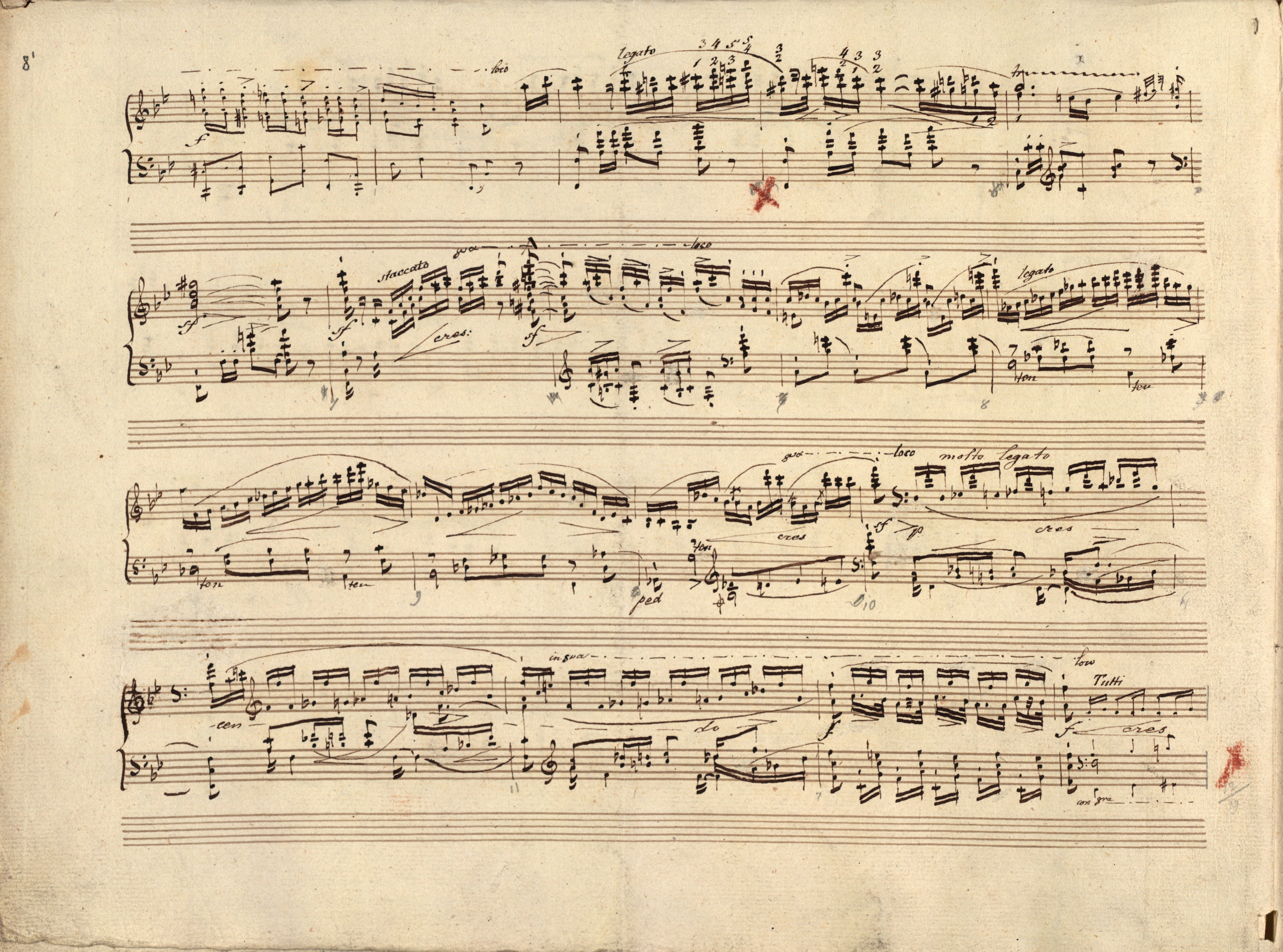Op. 2, Variations in B♭ major
Op. 10, 12 Etudes
Op. 11, Concerto in E minor
Op. 21, Concerto in F minor
Op. 22, Polonaise in E♭ major
Op. 24, 4 Mazurkas
Op. 25, 12 Etudes
Op. 26, 2 Polonaises
Op. 27, 2 Nocturnes
Op. 28, 24 Preludes
Op. 30, 4 Mazurkas
Op. 35, Sonata in B♭ minor
Op. 50, 3 Mazurkas
Op. 63, 3 Mazurkas
Op. 64, 3 Waltzes
(Op. 4), Sonata in C minor




Op. 2, Variations, complete
In R.H. figurations Chopin considers accidentals to be valid also in adjacent octaves. Therefore, in A there are no flats to the 9th, 12th and 15th semiquavers in bar 298 (a 2, d
2, d 3, g
3, g 3), the 14th semiquaver in bar 299 (d
3), the 14th semiquaver in bar 299 (d 3) and the 2nd and 18th semiquavers in bar 300 (d
3) and the 2nd and 18th semiquavers in bar 300 (d 1, c
1, c 1). All necessary flats were added already in GE (→FE,EE).
1). All necessary flats were added already in GE (→FE,EE).
There are more accidentals in #ApI than in A, both necessary (3rd, 4th and 6th among those mentioned above, with the omitted flats to d 2 in bar 299 and to a
2 in bar 299 and to a 1 in bar 300), and unnecessarily repeated ones (flats to g
1 in bar 300), and unnecessarily repeated ones (flats to g 2 at the end of bar 298 and to c
2 at the end of bar 298 and to c 2 on the 3rd beat of bar 300, and also a
2 on the 3rd beat of bar 300, and also a  to a2 in bar 299), as well as a cautionary
to a2 in bar 299), as well as a cautionary  to a1 in bar 299).
to a1 in bar 299).
Compare the passage in the sources »
category imprint: Interpretations within context; Differences between sources
issues: Accidentals in different octaves, GE revisions, Inaccuracies in A
notation: Pitch

